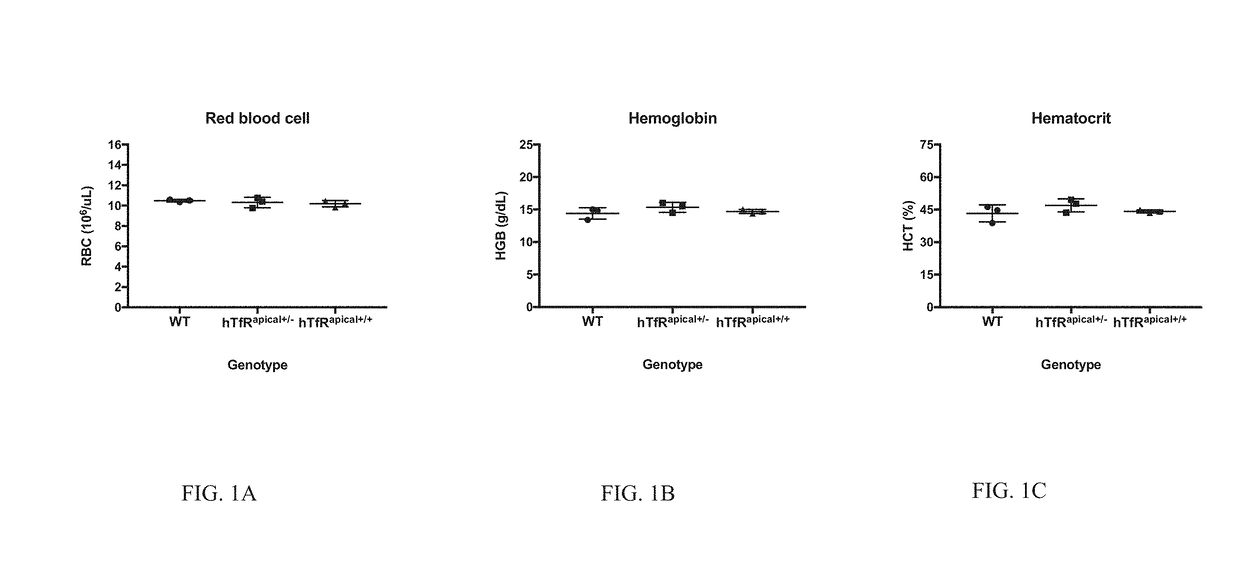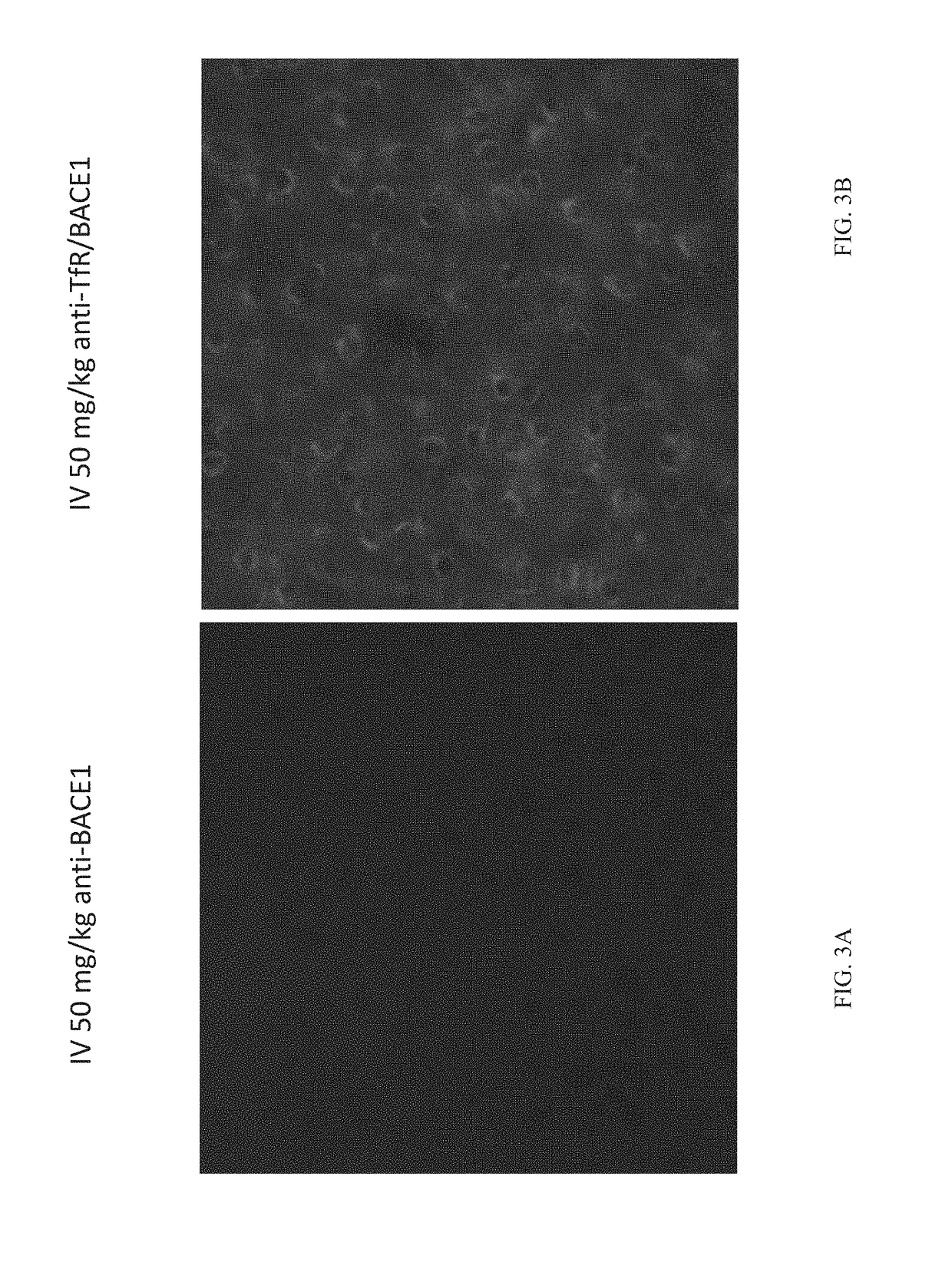Transferrin receptor transgenic models
a transgenic model and transgenic mouse technology, applied in the field of transgenic mouse transgenic models, can solve the problems of low red blood cell count, unhealthy transgenic mice, and abnormally high tfr expression
- Summary
- Abstract
- Description
- Claims
- Application Information
AI Technical Summary
Benefits of technology
Problems solved by technology
Method used
Image
Examples
example 1
se Generation and Characterization
[0081]Methods for generating knock-in / knock-out mice have been published in the literature and are well known to those with skill in the art. In brief, C57Bl6 mice were used to generate a knock-in of the human apical TfR mouse line via pronuclear microinjection into single cell embryos, followed by embryo transfer to pseudo pregnant females. Specifically, Cas9, sgRNAs SEQ ID NOs:10-11, and a donor DNA, SEQ ID NO:4, were introduced into the embryos. The donor DNA comprised the human apical domain coding sequence that has been codon optimized for expression in mouse, SEQ ID NO:2. The apical domain coding sequence was flanked with a left (nucleotides 1-817 of SEQ ID NO:4) and right homology arm (nucleotides 1523-2329 of SEQ ID NO:4). The donor sequence was designed in this manner such that the apical domain was to be inserted after the fourth mouse exon, and was immediately flanked at the 3′ end by the ninth mouse exon. A founder male from the progeny ...
example 2
n of Tool Antibodies for Monitoring Antibody Brain Uptake
[0082]Tool antibodies targeting human TfR or human / mouse BACE1 were generated by transforming Expi293 or ExpiCHO cells with expression plasmids containing DNA encoding the heavy and light chains and using protocols familiar to those with skill in the art. Bispecific antibodies were generated using the “knobs-into-holes” technology; knob and hole half antibodies were separately expressed and then joined using published methods. Antibodies were purified first with Protein A and then by size-exclusion chromatography. The antibodies generated for these studies were as follows:
anti-TfR: human IgG1 antibody that binds to human TfR apical domain.
anti-BACE1: human IgG1 antibody that binds to human BACE1 and cross-reacts with mouse BACE1. This antibody inhibits the enzymatic activity of BACE1.
anti-TfR / BACE1: human IgG1 knobs-into-holes bispecific antibody that binds to human TfR apical domain, as well as human and mouse BACE1. The knob...
PUM
| Property | Measurement | Unit |
|---|---|---|
| Fraction | aaaaa | aaaaa |
| Fraction | aaaaa | aaaaa |
| Nucleic acid sequence | aaaaa | aaaaa |
Abstract
Description
Claims
Application Information
 Login to View More
Login to View More - R&D
- Intellectual Property
- Life Sciences
- Materials
- Tech Scout
- Unparalleled Data Quality
- Higher Quality Content
- 60% Fewer Hallucinations
Browse by: Latest US Patents, China's latest patents, Technical Efficacy Thesaurus, Application Domain, Technology Topic, Popular Technical Reports.
© 2025 PatSnap. All rights reserved.Legal|Privacy policy|Modern Slavery Act Transparency Statement|Sitemap|About US| Contact US: help@patsnap.com



